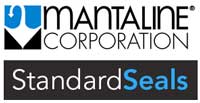Develop – Product Realization
APQP
Foundation for continuous improvement
Advanced Product Quality Planning (APQP) sets the foundation for continuous improvement from launch, feedback, assessment and corrective action, to effective production. This regimen, adopted by the automotive and (now) other industries, is an essential aspect of all Mantaline product launches. APQP sets our manufacturing team up for success.
PPAP
Evidence that production process consistently produces conforming product
The Production Part Approval Process (PPAP) provides customers with evidence that the production process is capable of consistently producing conforming product. The Automotive Industry Action Group (AIAG) has developed a common PPAP standard as part of APQP. We document and submit the PPAP per the requirements of the customer or submit other customer approved documentation as required, in order to satisfy our customer’s launch protocols.
VA/VE
Increase the value or decrease the cost
Value Analysis (VA) is used to understand the detail of specific situations. Value Engineering (VE) is the process of identifying specific solutions to detailed problems. How do we use VA/VE? To identify and prioritize functions or to identify items to be analyzed. Functions are the activities for which the customer is paying.
VA and VE are used to increase the value of products or services to all parties. How? By considering the function of individual items and the benefits of the specific function, then balancing the two against costs, in order to deliver the product or service. The overall task becomes: increase the value or decrease the cost.
Kaizen
Practices that improve all functions
Kaizen (Japanese for ‘improvement’ or ‘change for the better’) refers to philosophies or practices that focus on continuous improvement of processes in manufacturing, engineering, supporting business processes and management. We apply ‘kaizen’ to activities with the aim of improving across the board. Improving all functions from purchasing and logistics, administrative systems and procedures, launch protocols, and plant floor activities, will – at some time or other – come into the scrutiny of improvement evaluation.
Cost Improvement
We demand improvement
This activity focuses on the costs generated outside the sphere of manufacturing but nonetheless, impact our customers. The cost of purchased-in components and raw materials ranks high on the list of improvements for which we demand improvement. But the cost of purchased molds and dies, steel for dies made in-house and freight and other logistics costs, are also the subject of intense focus.
Quality Improvement
Strategies aimed at improving performance
Using state-of-the-art testing systems, Mantaline verifies that the product will meet your specifications. Mantaline typically performs tests for material properties such as tensile strength and compression set, as well as design properties such as insertion-extraction, compression-load deflection, coefficients of friction and dimensional analysis. Evaluating existing processes and implementing improvement, prevention and correction strategies – aimed at improving performance and eliminating waste – is the focus of this activity.



